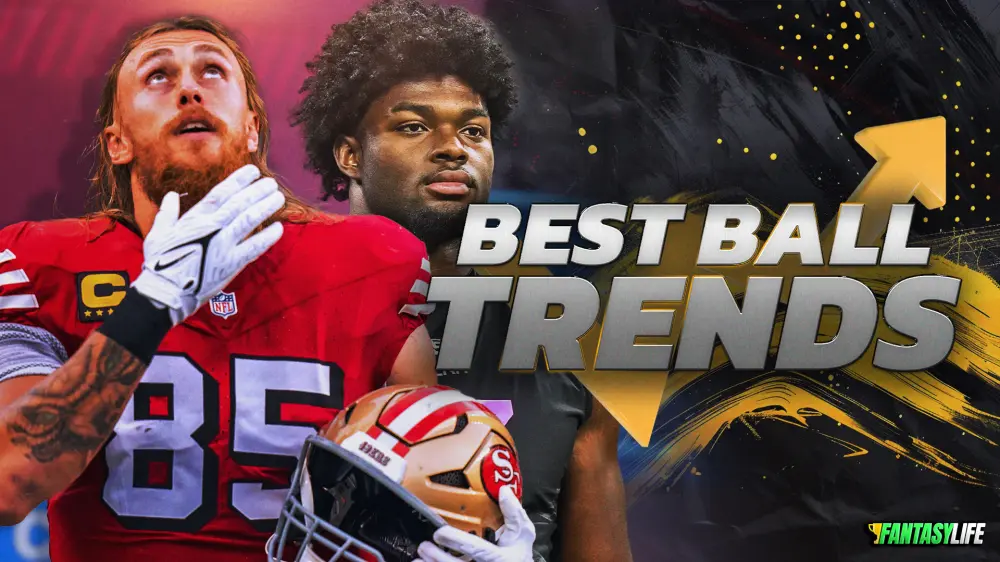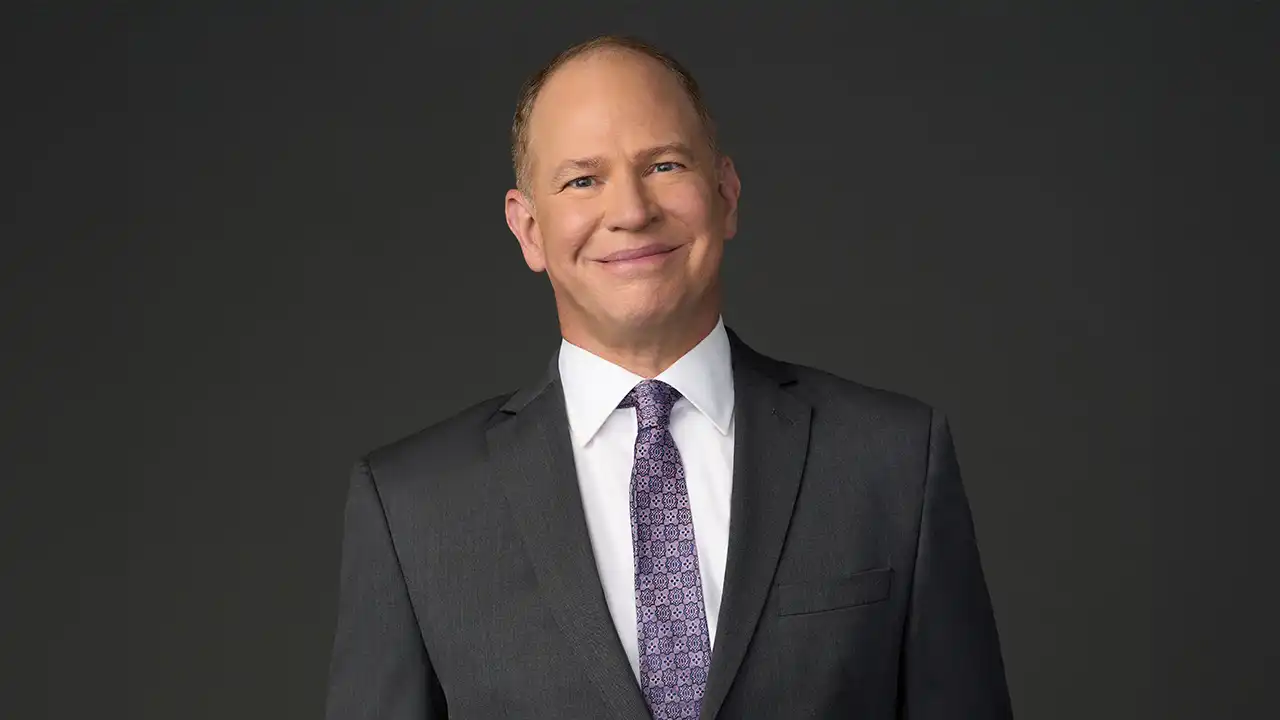
2025 Best Ball Draft Strategy: Taking a Barbell Approach at the TE Position
You would think with Travis Kelce inching to retirement, Mark Andrews tumbling out of the early rounds, and Kyle Pitts getting memory-wiped by the fantasy community that we'd be looking at a bleak landscape for the tight end position in 2025.
But thanks to a solid incoming draft class and a couple of emerging superstars, the position feels stronger and deeper than ever.
If there's one position I'm never worried about getting "boxed out" on during a draft, it's tight end. No matter which round you are in, there is likely a serviceable option for your team's needs.
That said, I do think there is a dominant TE strategy in pre-NFL Draft contests right now.
In this piece, I'll walk through my "barbell" strategy, which focuses on the Elite TEs at the top of the draft board and the rookie fliers at the end of the draft.
This isn't to say it isn't viable to select TEs in the middle portion of the board–especially if you can get a value–but rather to emphasize the league-winning benefits that these two cohorts of players can provide teams.
2025 Best Ball Draft Strategy At The Tight End Position
Elite Tight End Targets
Why elite tight ends? The Elite TE thesis is fairly simple. As a position, tight ends are the lowest-scoring position and the most volatile. If you hit on a difference-making tight end, you have a massive advantage over your leaguemates.
In addition, the Elite TEs possess a ceiling that can help your teams advance in the fantasy playoffs, which is particularly important for the gauntlet-style pods in these massive best ball tournaments. There's only a handful of TEs predictably capable of dropping 25+ points on a given week.
Last year, Brock Bowers (12.1), George Kittle (13.9), and Trey McBride (11.9) led the position with points per game. For reference, the 12th-ranked tight end—Hunter Henry—averaged 7.0 points per game.
It doesn't take a math whiz to realize that the elite Tight Ends can give your team a 5-point head start over the teams who punted the position.
For 2025, I'm not looking to reinvent the wheel. I am heavily prioritizing these three at the top of drafts.
- Brock Bowers (ADP: 16.1): Bowers set the NFL rookie record with 112 receptions and 1,194 receiving yards and led the entire league in both those categories. Now he gets a QB upgrade with Geno Smith. He's a must-draft player at any point in Round 2 for me.
- Trey McBride (ADP: 27.3): Posted career best receptions (111) and receiving yards (1,146) in 2024. His yards after catch (10.3) was elite, too. If he starts finding the endzone, watch out. I never let him slip past me in Round 3.
- George Kittle (ADP: 52.6): Kittle does it year after year. He led all TEs in TDs (8) in 2025 and will likely face even less target competition in 2025 without Deebo Samuel around. He's a smash in Round 5.
Currently, Bowers and McBride are tied for my most drafted TE (29.4%), and Kittle is my second most-drafted (23.5%).
Once you lock up an Elite TE, you can focus on other positions until the later rounds …
Late-Round Rookie Tight End Targets
Why rookie tight ends? In recent years, rookie TEs have proven to be league-winners. Gone are the days when it takes 2-3 years for tight ends to make an impact in the league. As Cooterdoodle outlined earlier this week, rookie TEs continue to smash. One of the main reasons they smash is that they are priced so cheaply. In her piece, she makes the case for Tyler Warren and Colston Loveland—two great TE prospects, for sure—but they are somewhat expensive relative to some of the other under-the-radar rookies.
Here are the three late-round rookie darts I'm prioritizing in drafts right now.
- Harold Fannin (ADP: 214): Dwain's Super Model has Fannin Jr. as a borderline TE1 prospect with a rock-solid rating (77). He has the highest production rating ever (100) in the model and is only 21 years old. He's a natural receiver who can make an immediate fantasy impact. He's my preferred late-round TE flier.
- Mason Taylor (ADP: 236.5): Taylor's draft stock is on the rise and now looks like he could go in Round 2. Dwain's comps include Cole Kmet and Cade Otton, who are serviceable. Let's also not forget the generational genes—his dad is Hall of Famer Jason Taylor.
- Elijah Arroyo (ADP: 234.8): Arroyo's analytical profile is muddled by the fact that he only played nine games in his second and third seasons due to an ACL injury. Still, he dominated at the Senior Bowl and has the traits to be a downfield threat in the NFL.
Along with Bowers and McBride, Taylor is my most drafted TE right now (29.4%), Fannin Jr. is tied with Kittle as my second-most drafted (23.5%), and Arroyo is tied for my third most-drafted at 17.6%.
Conclusion: Don't Force It
This barbell strategy is my preferred way to attack drafts, but it is not the only way to tackle the position. There have been plenty of drafts where I wasn't able to lock up one of Bowers, McBride, or Kittle and was forced to pivot to some mid-round TE options.
If you do get boxed out from one of those top three options, I do love the idea of prioritizing one of Warren or Loveland in the middle rounds to give your TE room some legitimate upside.
Extreme Punt TE is also viable. In my draft with Ian the other day (you can watch it here), we went full punt TE and waited the final rounds to select our three tight ends.
I do prefer to select three tight ends total in these pre-draft contests with 20 roster spots, but when you have one of the top three elite TEs, it is perfectly fine to stop with two.
One final consideration, regardless of which TEs you take, is to consider stacking. We obviously don't know who will be throwing to the rookie TEs yet, but I prioritize Geno (Bowers), Kyler Murray (McBride), and Brock Purdy (Kittle) when I select their TE.


